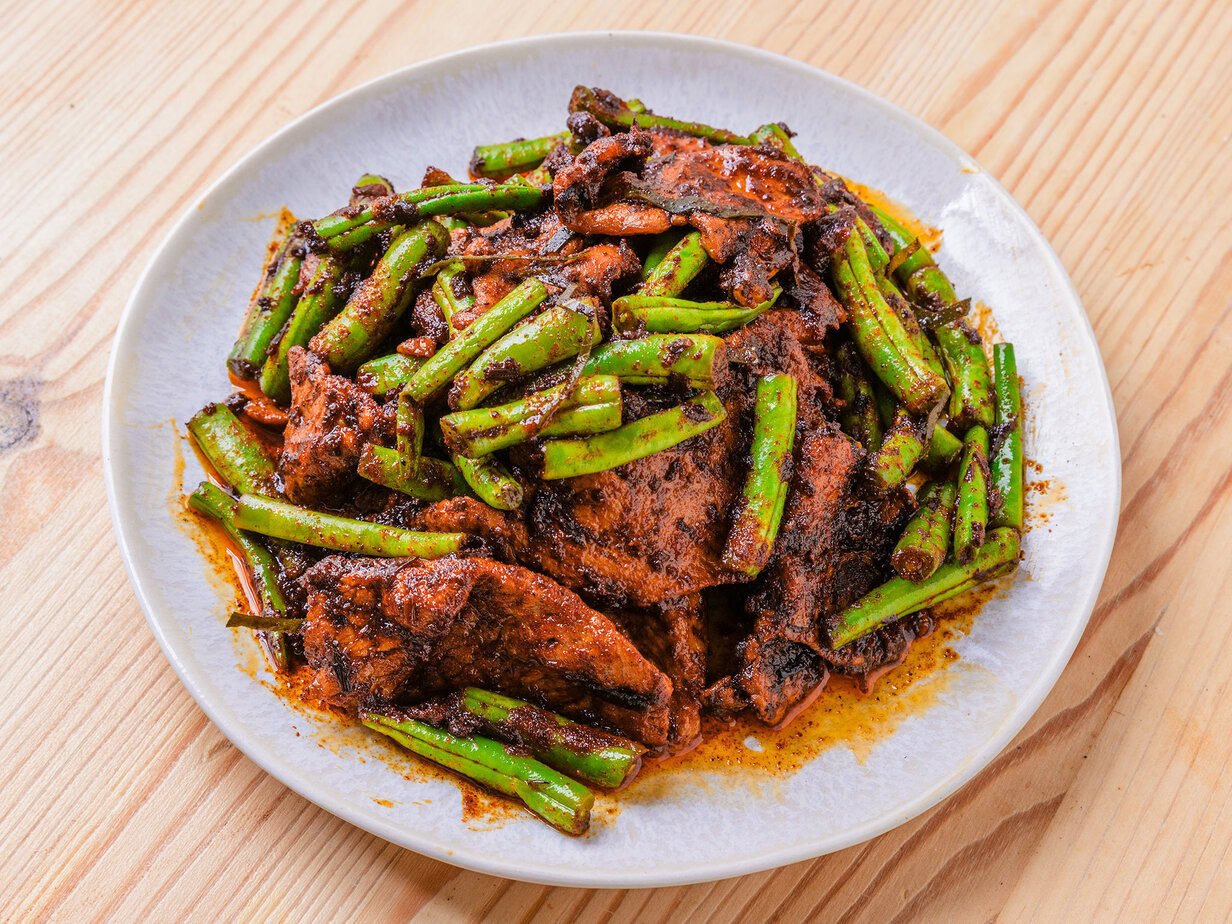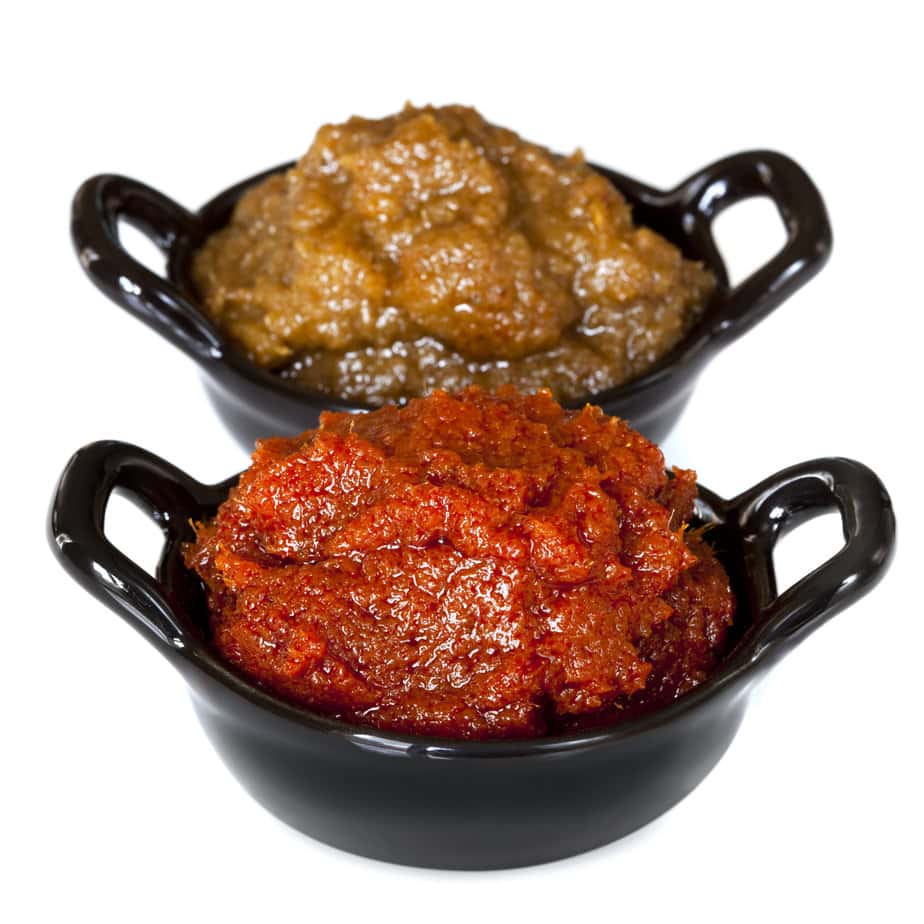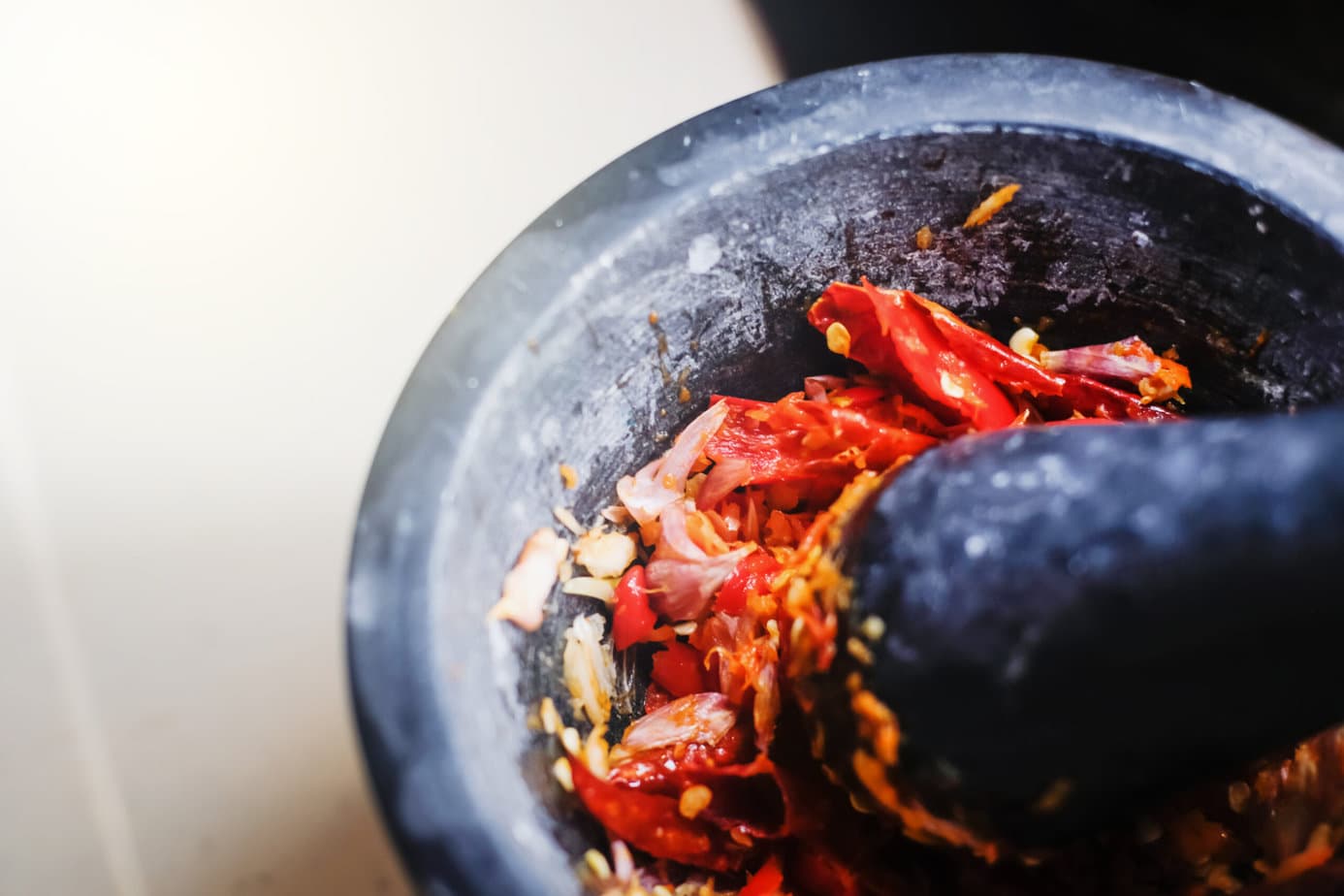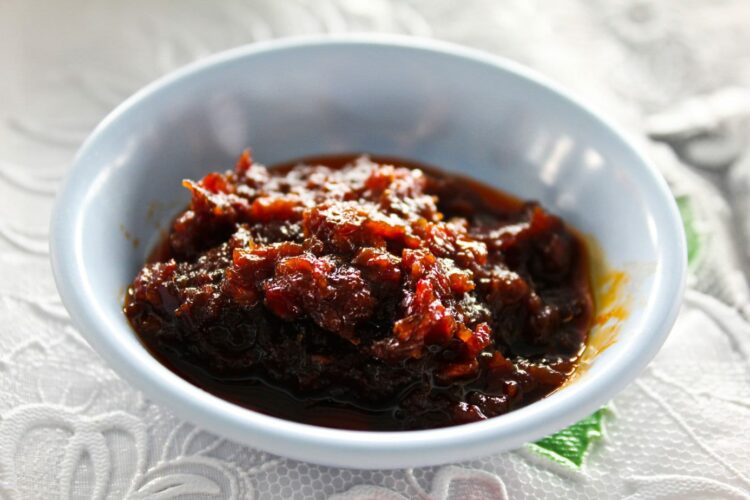What is red curry paste?
You’ve probably walked past those glass jars at the supermarket and wondered what they were. As you might guess, curry paste is, first and foremost, a blend of spices sold—as the name suggests—in paste form.
Needless to say, it’s a staple of Thai cuisine. While there are different kinds of curry pastes, you’ll consistently find the same building blocks in each: chilies, galangal, salt, turmeric, lemongrass, shrimp paste, and garlic. You’ll find the exact recipe at the end of the article.
Each paste has its own color and character—a vibrant palette that not only brightens the plate but also lends a distinct flavor depending on the hue you choose.

Origin of Thai red curry paste
Red curry has been spicing up dishes for centuries. Spice blends resembling curry were used in Mesopotamia around 1700 BC, but this condiment is, above all, rooted in Thailand.
Since then, Thai cuisine has won fans around the world while keeping its distinct character.
The unique taste of fresh herbs and lemongrass clearly speaks to its Asian origins. That said, Thai cuisine hasn’t been immune to outside influences.
Many of its spices trace back to India. It’s even said that Portuguese missionaries introduced chilies from Central America. Today, many chefs reinterpret the recipe in their own way to complement their dishes.
The different types of Thai curry paste
There are three main types of curry paste: red curry paste, yellow curry paste, and green curry paste. Beyond color, what sets them apart is the chilies used: red curry uses red chilies, green curry uses green chilies, and yellow curry uses yellow chilies.

Color is a handy guide to flavor. In Thailand, each chili has its own personality. Despite popular belief, red curry is milder than green curry. If you love heat, reach for green curry paste.
Green curry is the most popular in Thai cooking and is especially known for its intensity. Yellow curry strikes a perfect balance between the two.
Flavor profile of Thai red curry paste
Over the years, curry pastes have evolved with new ingredients. Even so, Thai red curry has remained largely the same. Cooks in Thailand don’t skimp on red chilies, making the paste very, very spicy.
Some prefer to reduce the number of fresh chilies and supplement with chili powder or a little tomato sauce—without losing that vivid red hue or intensity. The result is a fiery blend that’s still creamy and rich.
Cooking with red curry paste
Red curry paste is a versatile condiment used across a wide range of Thai dishes. It’s a natural in curries, where vegetables or pieces of meat are sautéed with the paste and coconut milk.
It will season your noodles just as well as your salads, soups, stews, and many other Thai dishes.
Use it in marinades for meat, too. It perks up chicken dishes and fish alike. In short, red curry paste brings bland dishes back to life.

Substitutes for red curry paste
No red curry paste in your pantry? Curry powder can do the trick. As a rule of thumb, one tablespoon of curry paste equals roughly one teaspoon of curry powder—adjust to taste.
Alternatively, swap in green or yellow curry.
The flavor and heat won’t be identical, but these pastes are versatile and play well in most dishes. You can also reach for other styles, like laksa or massaman curry.
Where to buy Thai red curry paste
You’ll find authentic red curry paste at specialty Asian grocers and, increasingly, in mainstream supermarkets. It’s widely available these days; you won’t have trouble finding it.
If you’re feeling ambitious, it’s entirely possible to make your own red curry paste, even if it requires a bit of patience.
It’s not always easy to find every ingredient—like kaffir lime, lemongrass, or galangal. As for the rest—turmeric, garlic, and chilies—you should find them in your usual supermarkets.

If you want to go traditional, grab a mortar and pestle and pound everything together. Prefer a modern shortcut? A blender works great!
How to store Thai red curry paste?
Easy to make, and easy to store, too. Store it in an airtight container in the refrigerator for up to 2 weeks. Tip: spoon the paste into ice cube trays and freeze—you’ll keep it even longer!
When needed, defrost portions as you go. Just warm them in a saucepan before cooking. For store-bought jars, follow the instructions on the label.
Key ingredients in Thai red curry paste
Fish sauce: No Thai dish is complete without good fish sauce. It’s worth the investment—you won’t regret it. More seriously, it brings an indescribable depth (that classic umami) and beautifully nuanced saltiness.
Chili flakes or gochugaru: Korean chili flakes with an irresistible flavor; you can substitute any other chili powder, but trust me—it’s delicious.
Galangal: a rhizome similar to ginger, but with more peppery, piney notes
Thai red curry paste recipe

Ingredients
- 1 shallot, thinly sliced
- 1 stalk fresh lemongrass, thinly sliced
- 2 red chilies
- 4 cloves garlic
- 1 small piece of galangal
- 2 tablespoons ketchup
- 2 tablespoons fish sauce
- 2 tablespoons lime juice
- 2 tablespoons chili flakes
- 1.5 tablespoons coconut milk
- 1 teaspoon shrimp paste
- 1 teaspoon sugar
- 1 teaspoon ground cumin
- 1 teaspoon ground coriander
- 0.25 teaspoon white pepper
- 0.25 teaspoon ground cinnamon
Instructions
- Pound everything with a mortar and pestle, or blend in a blender.

